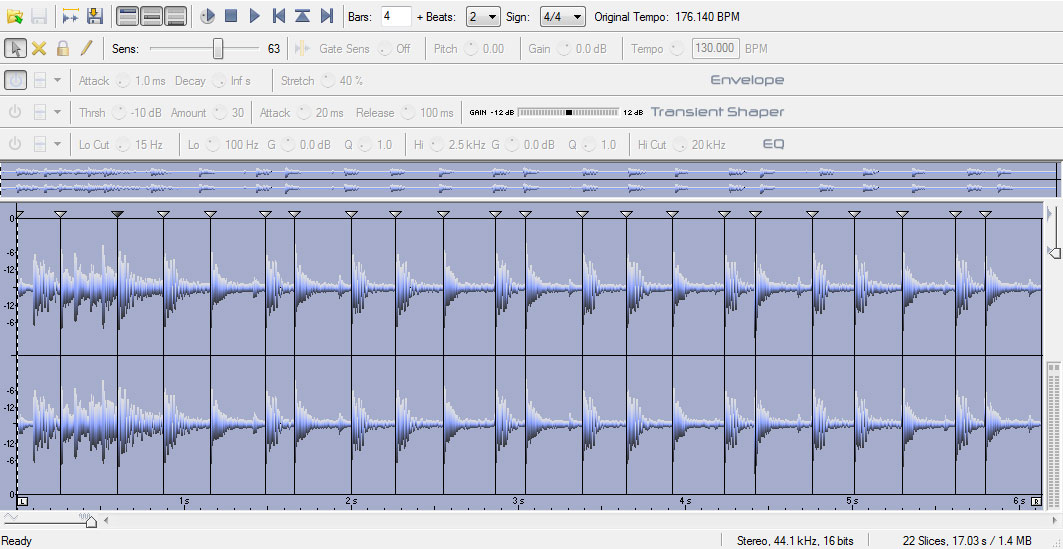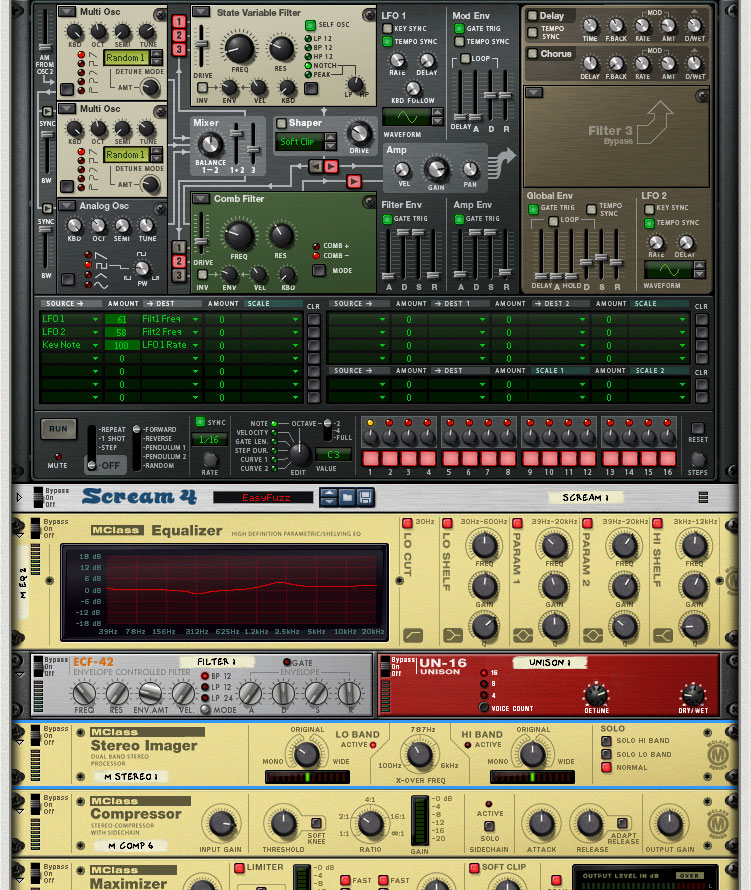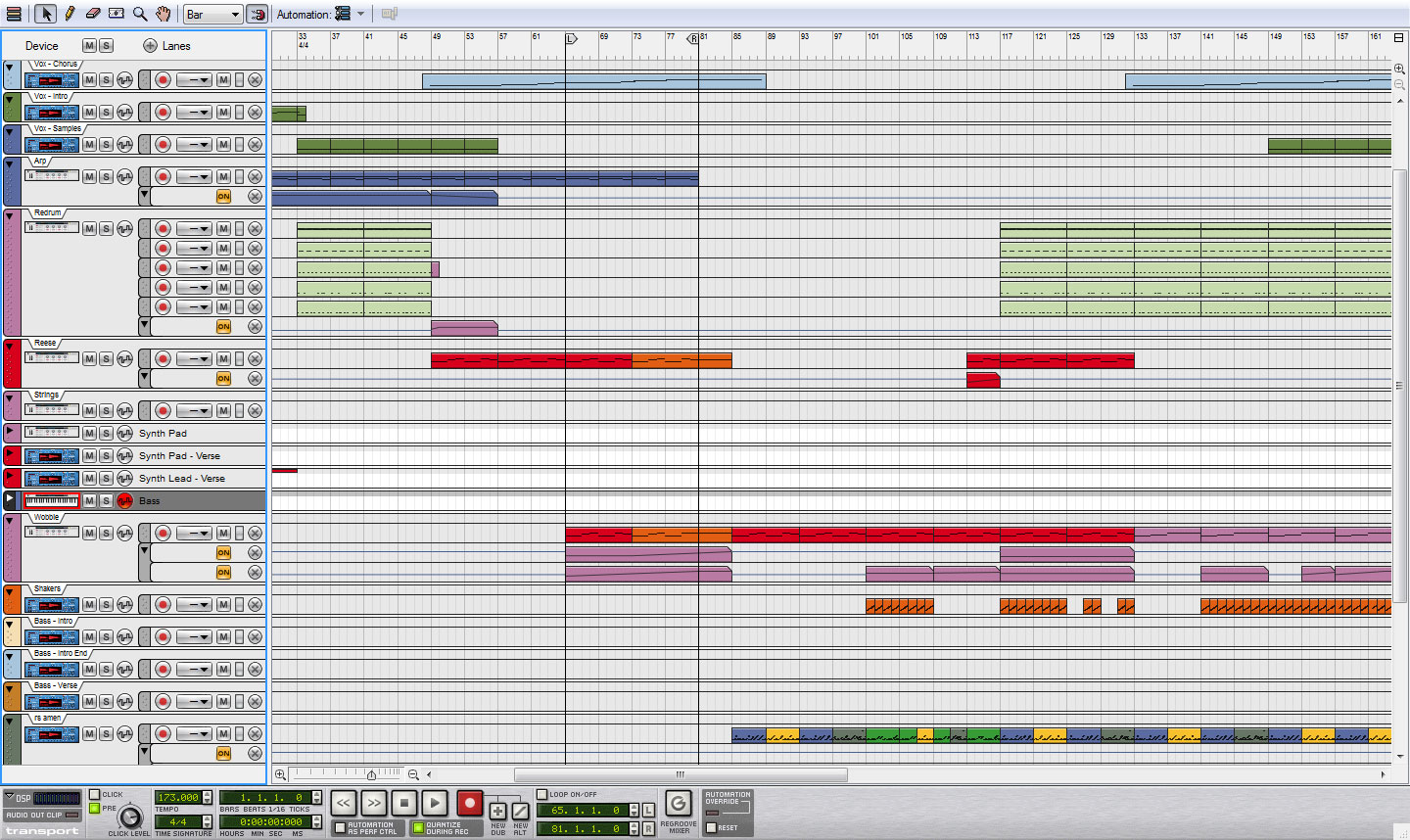People who enjoy listening to more ‘traditional’ styles of music often believe that electronic music shouldn’t be called ‘real’ music. They believe that producing electronic music must be so easy, because after all, isn’t it just a few loops played over and over? This is one of the common misconceptions about electronic music production.
I have recently been working on a remix of a Shapeshifter song called Longest Day. To give you an idea of the music production process and how it is much more than looping a few sounds, I’m going to share with you some of the work that I’ve put into this remix.Shapeshifter were nice enough to provide all of the mastered tracks for Longest Day as part of their The System Is A Remix competition. There were 12 tracks in total, including vocals, drums, synths, bass, etc. Because these tracks were provided as WAVE files, I had to cut up each track into sections.

Each track has many different sections which can be turned into loops. For this remix I split the drum track into an introduction, verse, chorus, and several fills.

Different producers use different techniques for building their drum tracks. Some producers split their loops into individual drum hits. I prefer to slice the loops using Recycle so that I can easily manipulate them using the Dr. Rex loop player. Slicing a loop can be fairly simple, but producing a good quality loop takes a lot of time and patience. It took me about 6 hours to create sliced loops for 6 of the 12 tracks provided by Shapeshifter.

With the sliced tracks finished, I open up my DAW of choice –Reason– and began sequencing the structure of my remix. Sequencing is the easiest part of producing a track; it is where the finished elements of the track can be cut up, copied, and moved around until everything sounds right.
Having these loops was great, but my remix wouldn’t be much of a remix without my own sounds thrown into the mix. Synthesizing sounds is where I invest most of my production time – I can spend days perfecting a sound.

Creating all the sounds in a track can take a very long time. I know producers who are motivated (and inspired) enough to start and finish a track within a week. I tend to take months to finish mine, as I am constantly creating and tweaking sounds.

After a producer has ‘finished’ a track, there is often a lot of post-production work that happens. This includes having the track professionally mixed and mastered, and then tested on various sound systems.
So, I hope this short glimpse at what is involved in electronic music production has made you think of electronic music as something more than just a few loops thrown together over a repetitive beat. Who knows, maybe you even have a newfound respect for producers!
